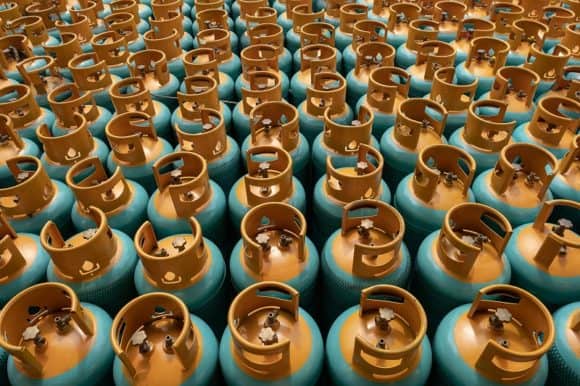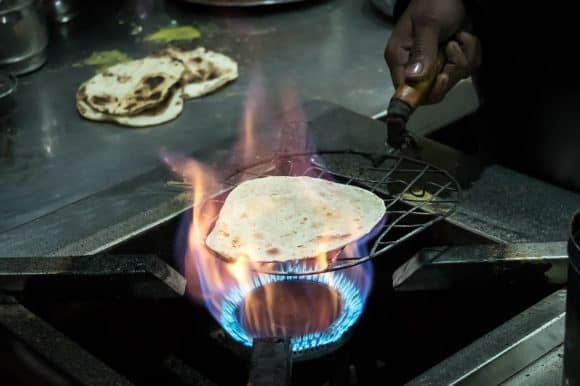By Abhishek Kar, Postdoctoral Research Scientist at Columbia University, USA, and IIASA Young Scientists Summer Program (YSSP) alumnus.
Abhishek Kar shares his thoughts on the Indian government’s Ujjwala program, which aims to scale up household access to Liquefied Petroleum Gas (LPG) for clean cooking.
About 2.9 billion people depend on burning traditional fuels like firewood rather than modern cooking fuels like gas and electricity to cook their daily meals. The household air pollution caused when these fuels are burned, along with the resultant exposure to kitchen smoke causes several respiratory and other diseases. It is estimated that between 2 and 3.6 million people die every year due to lack of access to clean cooking fuels. It also has severe environmental effects like forest degradation and contributes to climate change. To address these challenges, the Indian Government launched a massive program called Pradhan Mantri Ujjwala Yojana (PMUY, or Ujjwala) to scale up household access to Liquefied Petroleum Gas (LPG) in May 2016.
My IIASA Young Scientists Summer Program (YSSP) project under Shonali Pachauri’s supervision was about analyzing consumption patterns of LPG in rural India. We looked at whether there was any differences in consumption patterns between the Ujjwala beneficiaries and general consumers. The analysis formed part of my PhD research and was eventually published as the cover story for the September 2019 issue of the journal, Nature Energy. The journal also invited us to write a policy brief, which was published in January 2020. The study’s findings received widespread media attention, especially in India. When I talk to journalists, they often ask whether the Ujjwala program is a success or a failure. I would like to use this opportunity to clear common misconceptions and share my thoughts.
The Ujjwala program’s original mandate was to tackle the challenge of “lack of access to clean fuel” and to make LPG affordable for poor women. The program provided capital subsidies to this end. Unfortunately, the policy document neither discussed usage of LPG as an exclusive or primary cooking fuel, nor did it provide any incentive for regular use (barring the universal LPG cylinder subsidy that is provided to everyone). The program was ambitious in terms of both scale and timeline, and fulfilled its original aim of providing LPG connections for millions of poor women.
Current debates around the program’s failure to result in smokeless kitchens are happening only because Ujjwala succeeded in fulfilling its original mandate of ensuring physical access. In my opinion, it is truly a remarkable achievement to have reached out to 80 million poor women within 40 months. The process not only involved massive awareness generation and community mobilization, but also ramping up the supply chain to meet increased demand. While I have a lot to say about how Ujjwala can be improved, I think it would be unfair to call it a failure. Access is the first step towards transition to clean fuels, and at least in this respect, it was an extraordinary success, making it a model of energy access for developing countries.
Our research shows that Ujjwala was able to attract new consumers rapidly, but those consumers did not start using LPG on a regular basis. Based on the literature and my own experience, there are five reasons why regular LPG use is a challenge for Ujjwala consumers, and the scheme did not have any specific provisions to effectively address them.
First, rural communities generally have easy access to free firewood, crop residues, cattle dung, etc. So why would they start paying for commercial fuel, when free fuel is readily available for cooking?
Secondly, Ujjwala (bravely) targeted poor women, who generally have limited disposable cash and seasonal, agriculture linked fluctuations in income. If there is no additional income, what costs would a poor family on an already tight budget have to cut to afford such a regular additional expense? While the program has made a 5 kg cylinder option available in response to this issue, the impact on LPG sales is still unknown.
Thirdly, home delivery of LPG cylinders is a challenge in most rural areas, as the cost of delivery for LPG distributors often outweighs the commission they receive. If there is no delivery option, poor rural families who often don’t have access to transport would need to arrange for a cylinder to be picked up from a far-off retail outlet. Oil Marketing Companies have vigorously been pushing for home delivery, but unless there are explicit incentives for this, the situation is unlikely to improve.
In the fourth place, gender dynamics make the situation even more complicated. Men are often financial decision makers who have to make budget cuts, while women are the primary beneficiaries of LPG in terms of a quick and smokeless cooking experience, with the side benefit of avoiding the drudgery of fuelwood collection. The laudable effort of the LPG panchayat platform, where women share their success stories and strategies to overcome opposition within their homes, is a step in the right direction, but it is unlikely that this will be sufficient to tackle a deep-rooted societal problem.
Lastly, and perhaps most importantly, people will have to stop using mud stoves and start using LPG stoves, which may involve real (or, perceived) changes in the taste, texture, look, and size of food items. As a student of habit change literature, I am surprised that anyone expected that such a switch would not be accompanied by behavior change interventions.
Ultimately, the Ujjwala scheme provided incentives to reduce the burden of the capital cost of LPG connections, and poor female consumers responded to it positively. This is a successful first step towards clean cooking energy transition. However, there were no scheme incentives to promote use, except general LPG subsidies, which is available to all, including the urban middle class. Consumers simply decided that the transition to LPG through regular purchase of LPG refills was not worth it, and did not take the next step. I would however not call this a failure of Ujjwala, as that was never the original program objective.
We have to acknowledge that Ujjwala’s phenomenal success in providing access to clean fuel has put the spotlight on its ineffectiveness to ensure sustained regular use. If you ask me, this is a classic case of the glass half-full or half-empty scenario. Or, as my PhD supervisor at the University of British Columbia, Hisham Zerrifi, puts it: “It depends!”
References:
[1] Kar A, Pachauri S, Bailis R, & Zerriffi H (2019). Using sales data to assess cooking gas adoption and the impact of India’s Ujjwala program in rural Karnataka. Nature Energy DOI: 10.1038/s41560-019-0429-8 [pure.iiasa.ac.at/15994]
Note: This article gives the views of the author, and not the position of the Nexus blog, nor of the International Institute for Applied Systems Analysis.



You must be logged in to post a comment.